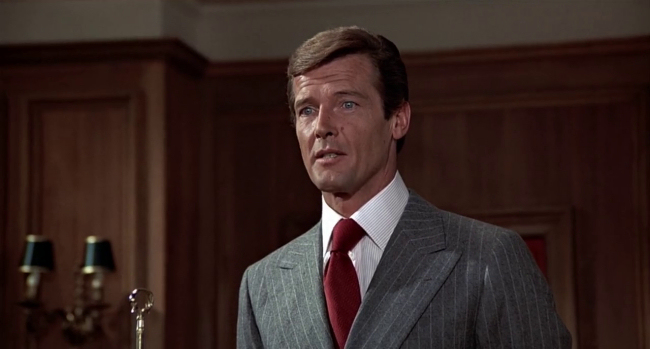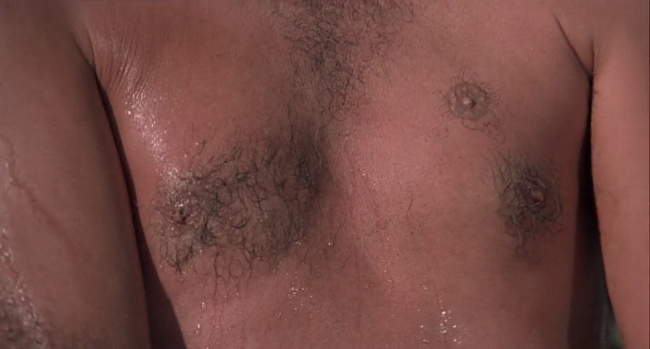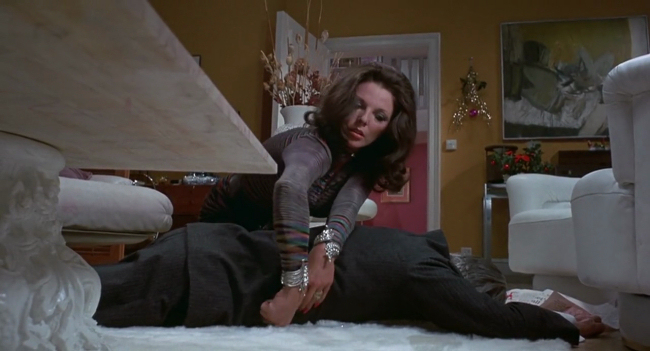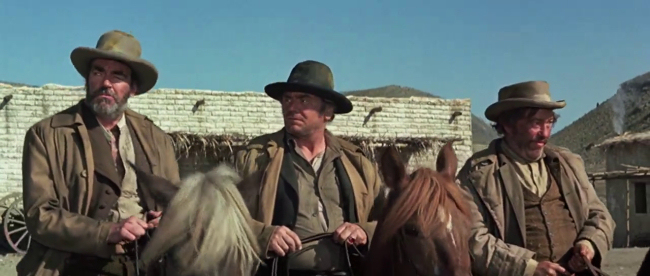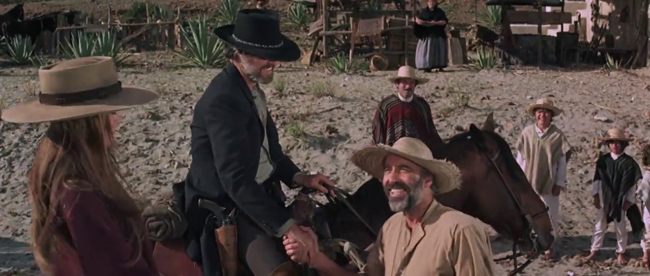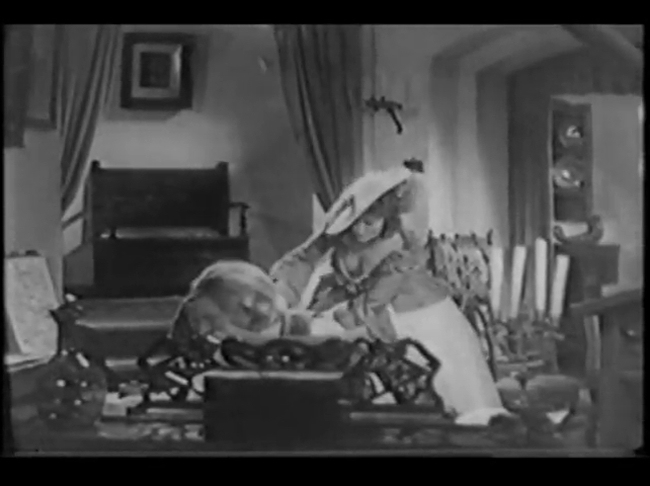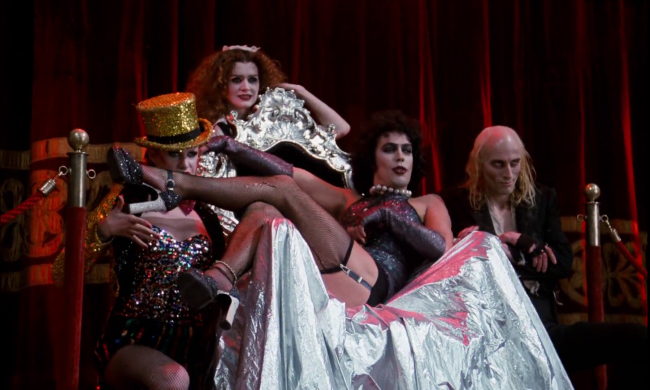
The greatness of some films seems like a matter of destiny, of some larger organic force unexplained by the sum of its parts. And I'm certainly not suggesting anything's wrong with the parts of 1975's The Rocky Horror Picture Show. Its parts are well formed, firm, tastefully lit, and sensitive. But nonetheless it feels like everything about it submits to something bigger, some supernatural or extraterrestrial commanding intellect. Watching it it's hard to believe no-one predicted it would still be in theatres forty years later and that fans would be dressing up as the characters and staging impromptu performances at screenings. It's, as they say, alive.

Who can explain the mysteries of life itself, who can say what irresistible energy assembles and animates the flesh and blood? Who but Frank N. Furter?
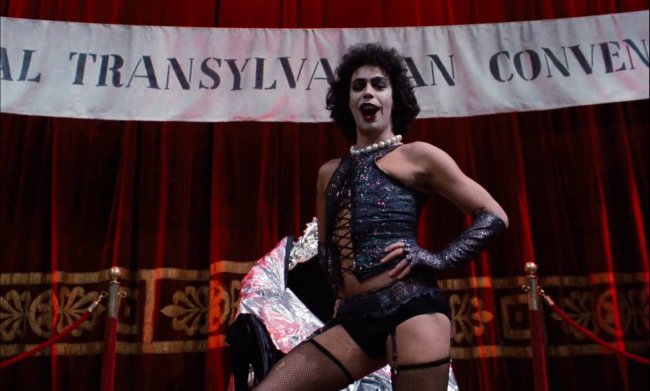
There are a few parts that are undeniably essential and Tim Curry as the "transvestite from transsexual Transylvania" is definitely one of them. First of all, Curry needs to get that makeup tattooed on his face. He should never go a minute without that makeup. I can't recall ever seeing a face more perfectly matched to a specific configuration of lipstick, mascara, and eyeliner. But Curry isn't merely a physical phenomenon, the naturalness with which he inhabits the role is a big tendril of that mysterious force. I suspect Curry's sense of familiarity with the part reflects repeated performances in the role in the original stage production, he so completely inhabits it, like clothes he's worn for decades. It's this sense of comfort and self-assurance that is so important--singing about transvestitism and transsexualism, the lyrics, pairing them with Transylvania, seem clearly meant to combine the concepts with horror, to shock the innocent heterosexual audience represented by straight laced Brad and Janet by proxy. But it's Frank N. Furter who comes off as natural and the "good" kids who are artificial and starchy. The story, which is both parody and tribute to classic horror and science fiction film, reflects the secret of so many of those films, that the ostensible villain is really the protagonist.

Barry Bostwick and Susan Sarandon as Brad and Janet, respectively, were not part of the original stage play cast which might explain their comparative disconnect from their roles but they are also in the mould of Kent Smith in Cat People or Otto Kruger in Dracula's Daughter, thin manifestations of the inhuman morality enforced by the Hays code or the Church or other organisation that attempts to regulate how people feel. Some cold, mechanical stand-in to reinforce how all this fascinating, wonderfully weird humanity is wrong. The comeuppance they get in The Rocky Horror Picture Show was a very, very long time coming.

The film used many sets, props, and locations from Hammer horror films but those films do not have the benefit of Peter Suschitzky's gorgeous cinematography, another essential element. This was just five years before Suschitzky would serve as cinematographer on The Empire Strikes Back, the only Star Wars movie David Cronenberg says looks good, which explains why Suschitzky has been cinematographer on all of Cronenberg's movies since Dead Ringers. Hammer films usually had pretty simple lighting, everything evenly lit as a supermarket or sometimes, like in Brides of Dracula, bearing excessive shine, particularly on cheap, freshly painted surfaces. Cinema was generally moving towards a more high contrast look in the 70s but Suschitzky's work on The Rocky Horror Picture Show is exceptionally beautiful, particularly for its flat darks and soft, lush lights. I especially love the look of Frank N. Furter's lab.

There's not the slightest bit of shine in Curry's hair, a rich black spot surrounded by the blood red tarp and the subtle gradation on the pink background bringing to mind engorged capillaries.

Another of my favourite scenes is the dinner scene where the people and table seem to almost be located in a black void and yet every single person's face is clearly visible without any sense of artificial, off screen illumination.

I didn't even mention the songs. There are so many elements that come together improbably well but maybe the most improbable thing is how elegantly it works, like a long shared, heartfelt dream brought to reality.
Twitter Sonnet #775
Angel Eyes talks to Graves about Venus.
Karaoke curtains conceal the rock.
Rocket radios have a tin penis.
Phantom ice skates never protect the sock.
Console companion eyes follow the comb.
Closer doors regard extant wan egress.
Snowmen slowly trudge aqueducts to Rome.
Faery ascetics are hard to impress.
Magenta flowers roost under the sign.
Pamphlets gather in the alcohol dust.
White powder moths stagger across the line.
Ivory telephones transmitted sage rust.
Sequinned swallowtails tyrannise the belle.
Alien signals topple into Hell.











